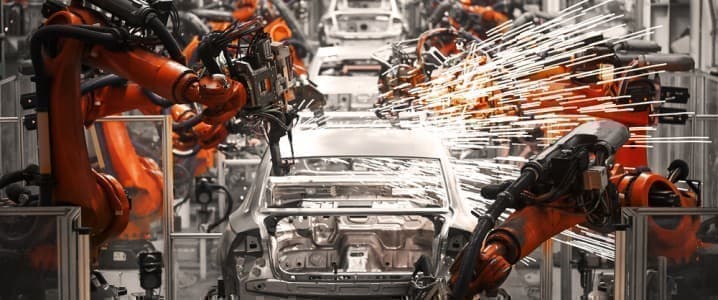Via AG Metal Miner The November Automotive MMI (Monthly MetalMiner Index) continued its long-term downward trend, falling by 5.04%. The drop is surprising to some extent, considering the demand for cars remains high in the U.S. and backlogs are keeping sales lucrative. However, obtaining raw materials for part manufacturing remains a problem. For instance, steel prices are still on shaky ground. Considering around 50% of most vehicles feature steel parts, most vehicle manufacturers feel they’re in a volatile situation.
Meanwhile, copper remains within a tightly squeezed market that faces long-term supply shortages. What’s more, international steel supply continues to reel due to factors like the War in Ukraine, high inflation, and softening demand in markets outside of the automotive industry. This adds up to fewer available resources for manufacturers and leaves many asking if the pinched automotive market can meet current consumer demand.
Ongoing Semiconductor Crisis Highlights Industry’s Susceptibility
In previous automotive MMI’s, MetalMiner commented on the ongoing semiconductor shortage. We also discussed supply problems facing many types of microchips used for car manufacturing. Unfortunately, the automotive industry continues to battle this crisis. Considering the aforementioned copper and steel prices, the issue comes at a very inconvenient time. And with such a booming demand for EVs, the need for highly-efficient microchips is more crucial than ever.
Many semiconductor imports come from Taiwan, and ongoing fears of a Chinese invasion on Taiwanese soil continues to run rampant. Indeed, if China were to declare war, it would cause immediate and irreversible disruptions to global semiconductor market. Back in August, Chinese military forces began conducting “military drills” outside of Taiwan. Many believe it’s only a matter of time before China carries out a full-blown invasion…
Changing Steel Prices, Decreased Production Leave Car Manufacturers Scrambling to Meet Demand
Last week, the American Iron and Steel Institute reported a 9.4% decrease in production week-over-week. While this only represented a single week out of the year, demand remains iffy and this number reflects a trend which has continued through the second half of 2022. This is largely due to rising inflation, energy shortages, supply chain pinches, and the War in Ukraine.
Related: U.S. National Security Adviser: Support For Ukraine Will Be “Unwavering”
As a result, steel for vehicle manufacturing remains strained, a fact reflected in fluctuating steel prices. Despite this, consumer demand remains robust, with some manufacturers dealing with large backlogs. Labor shortages also continue to persist amongst car manufacturers. This poses yet another challenge in meeting consumers’ expanding needs.
Macroeconomics Create Domino Effect
A recent Reuters article highlighted the ongoing crisis of rising prices, supply chain bottlenecks, and rising consumer demand as analyzed by automotive technology company Aptiv. This all has an impact on the automotive industry and steel prices. Though the Fed continues to raise interest rates, consumer demand still hasn’t dropped. To make matters worse, many expect vehicle production levels to drop even further next year.
Much of this resulted from China’s zero-COVID policy. Despite disastrous consequences, President Xi Jinping still hasn’t shown any signs of letting up on this policy. Unfortunately, this means low production levels for commodities like steel, copper, and aluminum have little hope of changing in the immediate future, at least for Chinese-sourced metal and raw materials like iron ore.
Despite this, car prices could begin to fall after two-year-long record highs. In fact, new car prices dipped slightly from September to October. In total, they were down to $45,599 from $46,173, a drop of 1.2%. It’s a sideways trend and a modest drop. However, the only real question is whether or not it will continue.
On one hand, consumer demand is strong, and consumers may pay higher prices to get their hands on new vehicles. On the other, low production levels will continue to pinch steel supplies and affect steel prices. With China’s relentless zero-COVID approach, it’s hard to tell what the future holds…
ADVERTISEMENT
By Jennifer Kary
More Top Reads From Oilprice.com:
- Euro Could Stay Below Dollar For As Long As Natural Gas Prices Remain High
- Zelenskiy Tells Ukrainians To Brace For More Electricity And Water Outages
- Coal Is Casting A Shadow Over China’s Remarkable Renewable Achievements

















